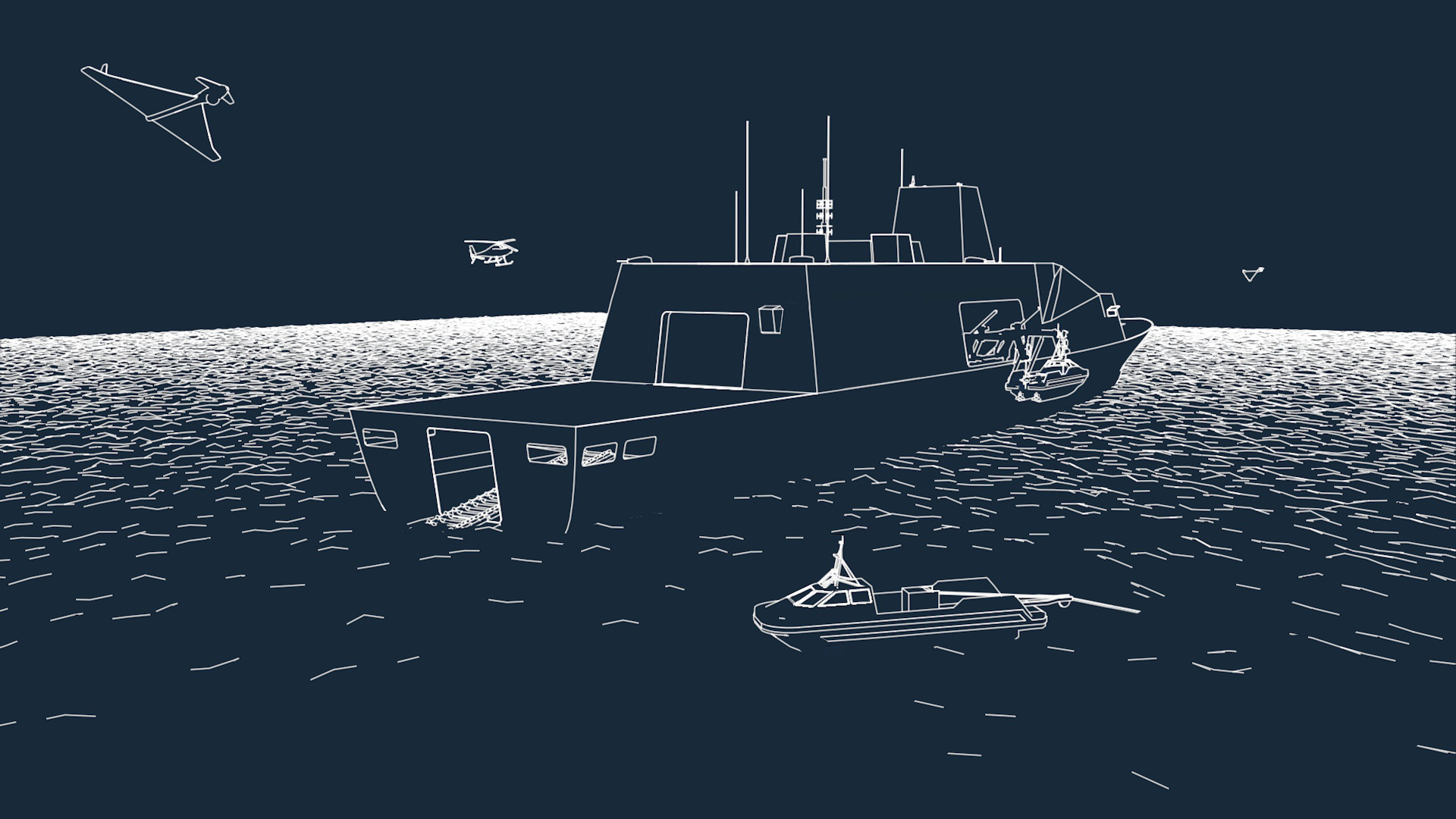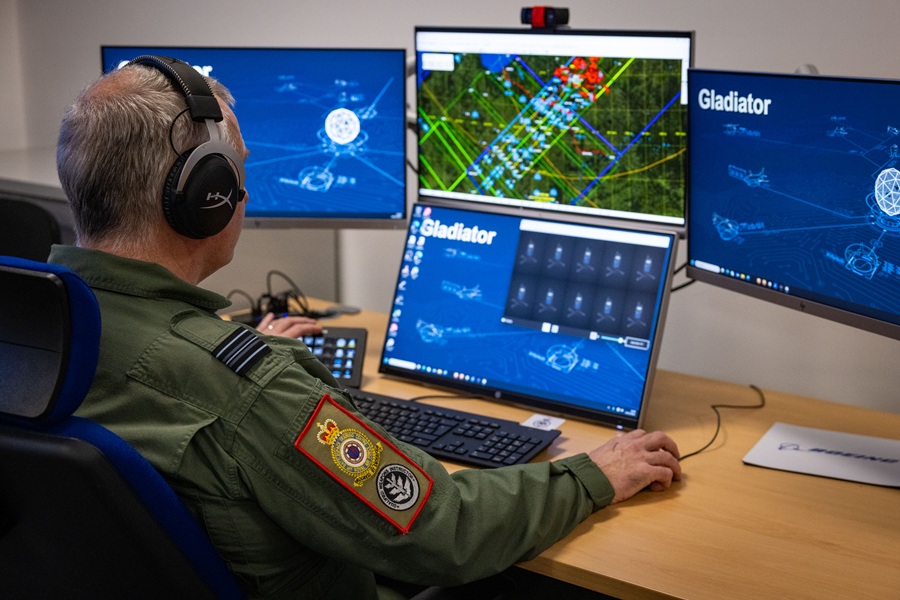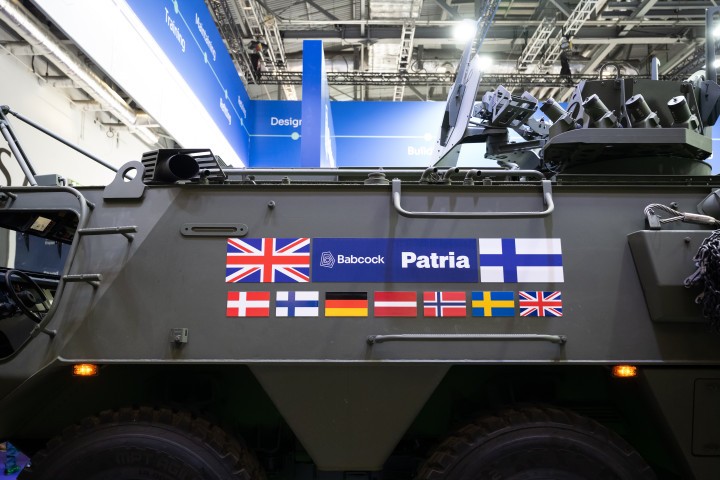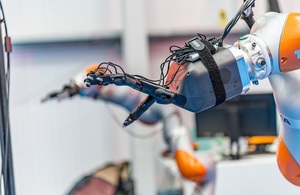DSEI 2021: BMT unveils Highly Autonomous Warship Technology project

Image courtesy BMT
The project provides a vision of how artificial intelligence (AI) and intelligent systems (IS) can be integrated into naval ship design in order to process huge amounts of data and provide information at the speed of relevance, allowing the ship and crew to be better informed to accelerate their decision-making and operational tempo. These improved organisational efficiencies in turn will reduce vessels through life costs, minimise personnel risk and create a step change in their capabilities.
Monty Long, Regional Business Development Director for UK and Europe at BMT said: “The unveiling of “Highly Autonomous Warship Technology (HAWT) programme” at DSEI is just the start of a journey. We are using the latest insights from horizon scanning to create a vision for the future. The programme is not about creating a concept design, but setting out the building blocks of autonomous system integration that can either be used to create new designs or integrated into other concepts.”
“The HAWT programme perfectly illustrates how BMT combines decades of renowned ship design experience with an understanding of the very latest robotics and AI-enabled technology developments to help optimise naval design for the future fleet.” added Long.
AI and IS offer a wealth of possibility and opportunity to transition naval design into a new sustainable paradigm, optimising for flexible military tasking. While large uncrewed naval vessels are still some way off, the use of elevated levels of automation to significantly reduce crewing levels - bringing increased levels of capability and vessel flexibility and reducing through life costs - is vital to the defence modernisation plans of many maritime nations.
This project, looks ahead to our 2040 Vision which aims to support the government’s fleet carbon reduction and automation targets, and promotes different philosophies from BMT’s technical experts that hone in on seven key areas:
1. Navigation – ‘How can navigation be safely automated in contested and GPS-denied environments?’
2. Warfare – ‘What future warfare scenarios are we designing against; what will naval warfare look like in 2040?’
3. Recoverability – ‘How can a lean-crewed vessel still respond to the challenges of damage control?’
4. Logistics and Maintenance – ‘Is it possible to have a 100-day maintenance-free mission? What information and management systems do you need to support this?’
5. Platform Systems – ‘How can prolonged autonomous operation of propulsion and auxiliary equipment be achieved?’
6. Human Factors – ‘How might we define levels of autonomy within a complex warship, and what human-autonomy relationships are to be avoided, and cultural changes instigated?’
7. Cyber Security – ‘In this highly automated future world, how can we ensure our systems are ‘cyber secure by design?’
The thought leadership programme includes one overarching whitepaper and seven individual technical papers, all available on demand.
Jake Rigby, Research and Development Lead for Defence and Security at BMT, commented: “This is a thought leadership concept for modern navies to consider when addressing how autonomy and emergent technologies can enable lean crewing to power Defence in a highly competitive age.”
“BMT’s vision for a highly autonomous warship is solution-based thought leadership, backed by credible and rigorous engineering analysis, which ultimately demonstrates how human risk and through life costs can both be reduced, while simultaneously opening up new capability options for autonomous vessels.”
Ian Savage, Chief Engineer at BMT said: “Over the next 20 years, BMT expects to see the increased adoption of offboard systems, coupled with higher levels of automation and high trust systems on board Naval vessels. However, human interaction will still be required to perform certain operational and decision-making functions due to ethical or operational complexity reasons. To support this, highly autonomous naval vessels will need to enable a small number of personnel to conduct operations and make key safety decisions while the vessel itself will largely operate autonomously with minimum operator interaction.”
In forging a pathway through Highly Automated Warship Technology, BMT is bridging the gap to autonomy through a deeper, philosophical understanding of the implications of enhanced automation systems on a vessel’s design, together with insight into the future strategic and operational environment affecting maritime security.
The transition from the current conventional concepts in marine transportation to a stage dominated by autonomous, lean-crewed ships is expected to take place over the next couple of decades. During this technology transition period BMT anticipates there being a mixture of vessels with different levels of autonomy at sea. The BMT vision promotes the management of safety of autonomous ships through controls and the human element factors’ considerations.
BMT is also showcasing its advanced defence and security technology solutions across land, sea and cyber/threat intelligence at DSEI.












